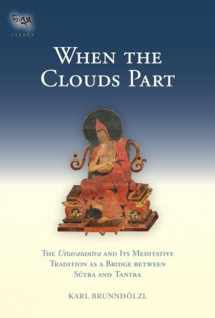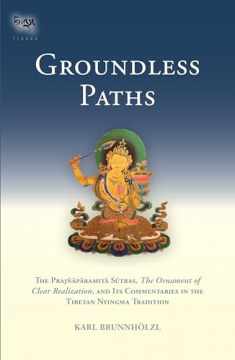
When the Clouds Part: The Uttaratantra and Its Meditative Tradition as a Bridge between Sutra and Tantra (Tsadra)
ISBN-13:
9781559394178
ISBN-10:
155939417X
Edition:
Illustrated
Publication date:
2015
Publisher:
Snow Lion
Format:
Hardcover
1152 pages
FREE US shipping
Book details
ISBN-13:
9781559394178
ISBN-10:
155939417X
Edition:
Illustrated
Publication date:
2015
Publisher:
Snow Lion
Format:
Hardcover
1152 pages
Summary
When the Clouds Part: The Uttaratantra and Its Meditative Tradition as a Bridge between Sutra and Tantra (Tsadra) (ISBN-13: 9781559394178 and ISBN-10: 155939417X), was published by Snow Lion in 2015.
With an overall rating of 4.4 stars, it's a notable title among other
books. You can easily purchase or rent When the Clouds Part: The Uttaratantra and Its Meditative Tradition as a Bridge between Sutra and Tantra (Tsadra) (Hardcover) from BooksRun,
along with many other new and used
books
and textbooks.
And, if you're looking to sell your copy, our current buyback offer is $3.14.
Description
A new translation of the primary Indian Buddhist text on buddha nature, with Tibetan commentaries explaining how this text can be used to contemplate and realize one's own buddha nature.
"Buddha nature" (tathāgatagarbha) is the innate potential in all living beings to become a fully awakened buddha. This book discusses a wide range of topics connected with the notion of buddha nature as presented in Indo-Tibetan Buddhism and includes an overview of the sūtra sources of the tathāgatagarbha teachings and the different ways of explaining the meaning of this term. It includes new translations of the Maitreya treatise Mahāyānottaratantra (Ratnagotravibhāga), the primary Indian text on the subject, its Indian commentaries, and two (hitherto untranslated) commentaries from the Tibetan Kagyü tradition. Most important, the translator’s introduction investigates in detail the meditative tradition of using the Mahāyānottaratantra as a basis for Mahāmudrā instructions and the Shentong approach. This is supplemented by translations of a number of short Tibetan meditation manuals from the Kadampa, Kagyü, and Jonang schools that use the Mahāyānottaratantra as a work to contemplate and realize one’s own buddha nature.
"Buddha nature" (tathāgatagarbha) is the innate potential in all living beings to become a fully awakened buddha. This book discusses a wide range of topics connected with the notion of buddha nature as presented in Indo-Tibetan Buddhism and includes an overview of the sūtra sources of the tathāgatagarbha teachings and the different ways of explaining the meaning of this term. It includes new translations of the Maitreya treatise Mahāyānottaratantra (Ratnagotravibhāga), the primary Indian text on the subject, its Indian commentaries, and two (hitherto untranslated) commentaries from the Tibetan Kagyü tradition. Most important, the translator’s introduction investigates in detail the meditative tradition of using the Mahāyānottaratantra as a basis for Mahāmudrā instructions and the Shentong approach. This is supplemented by translations of a number of short Tibetan meditation manuals from the Kadampa, Kagyü, and Jonang schools that use the Mahāyānottaratantra as a work to contemplate and realize one’s own buddha nature.


We would LOVE it if you could help us and other readers by reviewing the book
Book review

Congratulations! We have received your book review.
{user}
{createdAt}
by {truncated_author}




